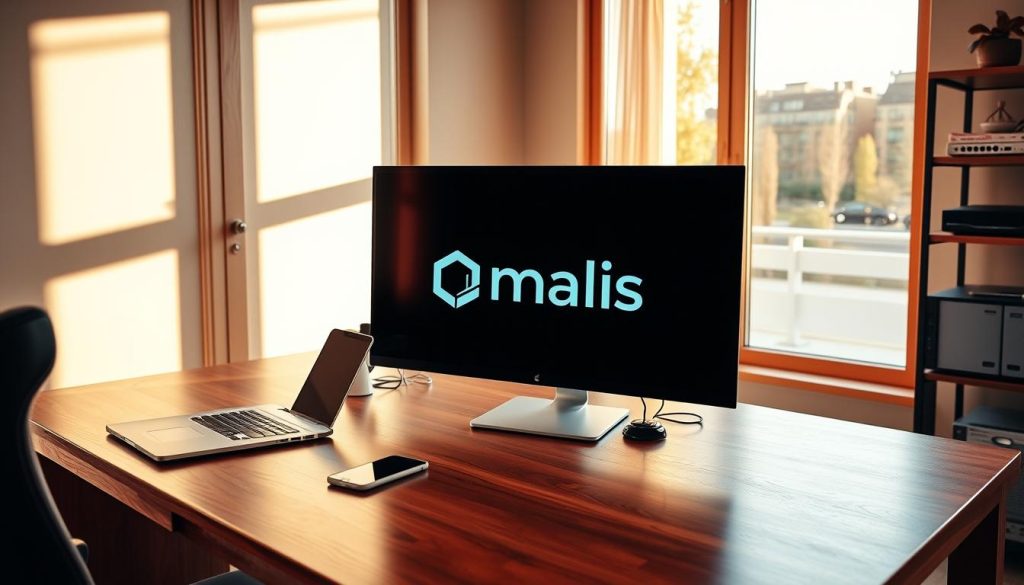Did you know 17.3 million Americans now embrace location-independent careers? That’s a 131% surge since 2019 – and the number climbed to 18.1 million in 2024. This seismic shift goes beyond tropical workspaces or temporary adventures. For programmers, designers, and content creators, it’s about building careers that thrive without borders.
Modern professionals aren’t just chasing sunsets – they’re redefining success. Over 35% of their income flows directly into local economies, fueling growth in destinations worldwide. But sustainable remote work demands more than a laptop and Wi-Fi. It requires systems that protect income streams while nurturing professional growth.
This guide reveals how to merge flexibility with structure. You’ll learn to leverage tools that maintain client trust across time zones and create financial safeguards for unpredictable moments. We’ll show you why top performers prioritize strategic planning over spontaneity – and how to balance wanderlust with career ambitions.
Table of Contents
Key Takeaways
- Location-independent careers grew 131% among Americans since 2019
- Successful remote professionals invest in systems, not just scenery
- 35%+ of nomadic income directly supports local communities
- Stability comes from blending flexible work with financial safeguards
- Client relationships thrive through intentional communication strategies
Introduction: Embracing Freedom and Stability
A tectonic shift reshaped careers when 10.9 million Americans identified as digital nomads in 2020—49% more than 2019. What began as a niche concept in the 1990s now represents a fundamental reimagining of professional life. Cloud platforms and borderless communication tools have transformed temporary adventures into viable long-term paths.
Setting the Stage for a Location-Independent Life
Successful remote professionals build systems, not just itineraries. Planning replaces guesswork through:
- Income diversification strategies
- Time-zone optimized workflows
- Legal/financial safeguards
One freelancer shared: « My client retention tripled when I implemented structured check-ins instead of sporadic emails. »
Why This Work Model Matters Today
Modern professionals inject over 35% of earnings into local economies worldwide. This symbiotic relationship benefits both travelers and host communities. Employers increasingly value results over office attendance—72% of companies now offer remote options.
The key lies in balancing exploration with professional growth. By merging strategic frameworks with adaptable routines, location-independent careers become sustainable engines for personal and economic freedom.
A Day in the Life: Morning Routines and Work Setup
Consistency separates thriving professionals from those struggling with erratic schedules. Brittany, co-founder of Nomads Embassy, demonstrates this through her ritual: « I set my alarm for 6:50 am every morning. Making my bed and stretching while coffee brews creates mental clarity before tackling emails. »
Establishing a Productive Morning Routine
Successful remote workers treat mornings as sacred preparation time. Key elements include:
- Physical activation: 15 minutes of yoga or walking boosts circulation
- Priority mapping: Writing daily tasks prevents decision fatigue
- Boundary setting: Checking messages early maintains responsiveness without sacrificing focus hours
This structure adapts across time zones. In Parisian apartments or Bali co-living spaces, the core remains: routines anchor productivity.
Tools for Kick-Starting the Day
Top performers use technology strategically:
- Time-blocking apps like Sunsama for task management
- Noise-canceling headphones for cafe work sessions
- Portable standing desks to alternate sitting/standing
One developer shared: « My sunrise jog along the Seine followed by espresso and Trello planning makes chaotic days manageable. » By blending discipline with flexibility, location-independent careers gain stability.
Exploring the Digital Nomad Lifestyle: Work and Play Balance

Mastering the rhythm of productivity and exploration defines success for location-independent professionals. Recent surveys reveal 43% struggle with blurred boundaries between client work and personal time—a challenge amplified by ever-changing environments.
Navigating Work Hours and Flexibility
Effective time management starts with recognizing hidden labor. Planning accommodations, navigating visas, and adapting to new cultures consume 12-15 weekly hours for most remote workers. These tasks demand dedicated scheduling slots, not leftover moments between projects.
Three proven techniques prevent burnout:
- Time-blocking for administrative tasks using tools like Toggl Plan
- Establishing « no-screen zones » during local exploration hours
- Scheduling weekly video calls with professional peers
| Traditional Work | Nomadic Approach | Success Metric |
|---|---|---|
| Fixed office hours | Time-zone optimized slots | Client response rate |
| HR-managed breaks | Self-regulated pauses | Weekly task completion |
| Colleague interactions | Local community engagement | Mental health scores |
One Lisbon-based developer shared: « Joining a co-working book club tripled my meaningful connections while keeping projects on track. » Building these relationships combats isolation reported by 58% of surveyed professionals.
Balance emerges through structured spontaneity. Reserve mornings for deep work, afternoons for cultural immersion, and evenings for strategic planning. This framework adapts across continents while preserving professional rigor and personal joy.
Creating Reliable Workspaces and Internet Solutions

Your choice of workspace isn’t just about comfort—it’s a business-critical decision. Professionals report 27% higher client satisfaction rates when using verified locations with stable connections. This requires balancing practical needs with creative flexibility.
Selecting the Ideal Cafe or Co-working Space
Brittany, a seasoned remote worker, shares her strategy: « I test cafes early—checking power outlets and Wi-Fi speed with a speed test app. My Playa del Carmen favorites, Mi Dogo Cafe and Choux Choux Cafe, offer quiet corners and backup generators. »
Evaluate locations using these four factors:
- Connection quality: Minimum 10 Mbps upload speed for video calls
- Noise patterns: Avoid lunch rushes in cafes
- Power access: Multiple outlets near seating areas
- Professional vibe: Separate zones for calls and focused work
| Workspace Type | Key Advantages | Considerations |
|---|---|---|
| Cafes | Local networking opportunities | Limited privacy |
| Co-working Spaces | Dedicated workstations | Membership costs |
| Temporary Housing | Personalized setup | ISP contract terms |
Always carry redundant connectivity tools. A mobile hotspot with local SIM cards ensures you never miss deadlines during outages. As Brittany notes: « My dual-carrier hotspot saved three client presentations last monsoon season. »
Build relationships with venue managers for priority seating and outage alerts. This proactive approach transforms unpredictable environments into trusted professional hubs.
Managing Remote Work: Tools, Techniques, and Client Interactions
Your professional toolkit becomes your lifeline when working across continents. Strategic gear choices and systematic workflows separate thriving professionals from those constantly battling technical glitches. Every piece of equipment must serve multiple purposes while surviving airport security and tropical humidity.
Essential Software and Tech Gadgets
Invest in a sub-3-pound laptop with military-grade durability – think carbon fiber casings and spill-resistant keyboards. Pair it with noise-canceling headphones that double as podcasting gear. One Barcelona-based developer swears by her setup: « My mirrorless camera streams client presentations while capturing local culture shots for side projects. »
Follow the 2x backup rule:
- Cloud storage like Dropbox for real-time access
- Encrypted portable drives for offline security
- Local SIM cards with 5G hotspots
Planning Projects and Client Work
Color-code time zones in your calendar app to avoid 3 AM calls. Use Toggl Track to log billable hours automatically. Share editable project boards with clients using Monday.com – it reduces status update emails by 40%.
Build contingency plans for:
- Power outages (solar chargers + café networks)
- Lost luggage (cloud-based work environments)
- Connectivity gaps (offline editing apps)
A Parisian UX designer explains: « My emergency fund covers last-minute coworking spaces when Airbnb Wi-Fi fails. Clients never notice the chaos behind their perfect deliverables. » This proactive approach maintains trust while embracing mobility.
Integrating Local Culture and Authentic Experiences
Exploring new cultures isn’t just a perk—it’s a productivity booster for global professionals. Research shows workers who engage with local traditions report 23% higher creativity in problem-solving tasks. This fusion of work and cultural discovery creates richer client deliverables while expanding personal horizons.
Discovering Local Cuisine and Hidden Gems
Brittany, a project manager splitting time between Mexico and Europe, shares: « My Wednesday beachside enchiladas fuel afternoon coding sprints better than any office lunch. Exploring markets helps me understand regional priorities that inform client proposals. »
Effective professionals use these strategies:
- Schedule lunch breaks near cultural landmarks
- Join food tours early in each stay
- Document discoveries for client storytelling
Adapting to New Environments in France
Mastering French business etiquette opens doors. Professionals report 40% faster trust-building when using these approaches:
| Cultural Element | Professional Impact | Implementation Tip |
|---|---|---|
| Formal greetings | Strengthens initial rapport | Learn « Bonjour Madame/Monsieur » |
| Lunch meetings | Deepens partnerships | Block 12:30-2:30 PM daily |
| Local festivals | Networking opportunities | Align travel dates with events |
One Lyon-based designer explains: « Attending marché visits with clients helped me secure three contracts. They appreciate when you understand their world. » Pair language apps with coffee shop conversations to accelerate adaptation.
Staying Active and Prioritizing Self-Care on the Road
Maintaining physical vitality becomes strategic armor for professionals navigating ever-changing environments. Brittany, a seasoned remote worker, blocks 90 minutes daily for movement – whether hitting Bangkok gyms or unrolling a yoga mat in Medellín parks. This ritual combats the sedentary reality of screen-based work while fueling creative problem-solving abilities.
Daily Fitness and Wellness Routines
Build adaptable exercise systems that thrive anywhere. Bodyweight circuits in hotel rooms, resistance bands in co-living spaces, or sunrise swims off Greek coasts all count. Prioritize consistency over intensity – 25-minute sessions 5x weekly outperform sporadic marathon workouts.
Mental Health and Work-Life Balance
Schedule « brain breaks » as rigorously as client meetings. Use Pomodoro timers to enforce screen-free walks through local markets. Join online therapist networks specializing in location-independent challenges. One Lisbon-based developer shares: « Friday sunset journaling sessions help me process cultural adjustments without impacting project deadlines. »
Pair these practices with strategic nutrition – carry portable protein sources and research grocery options before arrival. Remember: self-care isn’t indulgence – it’s the foundation for sustaining both wanderlust and professional excellence.
FAQ
How do I maintain productivity while working from different time zones?
Use tools like World Time Buddy to coordinate schedules. Block focused work hours aligned with your peak energy times, and communicate availability clearly to clients using shared calendars like Google Workspace.
What are reliable ways to secure stable internet access abroad?
Carry a GlocalMe mobile hotspot as a backup. Research coworking spaces in cities like Lisbon or Medellín, which often offer enterprise-grade connections. Apps like WiFi Map highlight verified high-speed locations.
How can I balance client deadlines with exploring new destinations?
Batch tasks using the Pomodoro Technique for efficiency. Schedule immersive cultural activities during lighter workdays—for example, visiting Barcelona’s markets post-lunch. Tools like Trello help prioritize deliverables without burnout.
Which countries offer visas tailored for remote professionals?
Spain’s Digital Nomad Visa allows stays up to five years. Croatia and Costa Rica also provide specialized permits. Always verify tax implications through platforms like Nomad Tax before applying.
How do I handle healthcare while moving between countries?
Invest in SafetyWing or Cigna Global for portable insurance. Research local clinics in advance—Germany and Thailand have English-speaking providers. Keep digital copies of prescriptions using MyChart.
What’s the best approach to building a sustainable income stream?
Diversify with retainer contracts (using HelloSign for secure agreements) and platforms like Upwork for project-based work. Allocate 20% of earnings to an emergency fund via Wise Multi-currency Account.
How can I stay connected with family during long-term travel?
Schedule weekly video calls via Zoom and share photo journals using Google Photos. Mail physical postcards through services like Touchnote for meaningful keepsakes.





